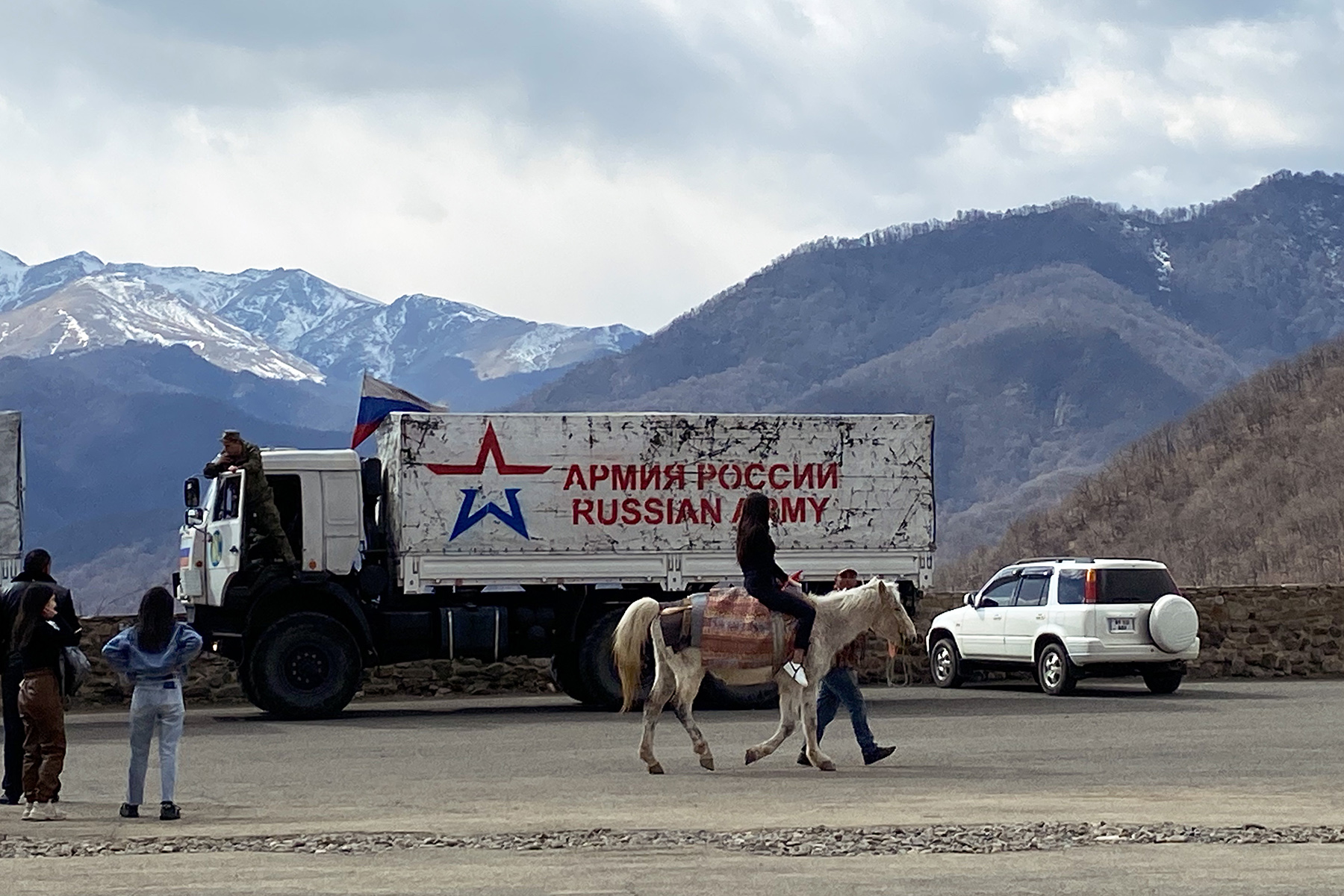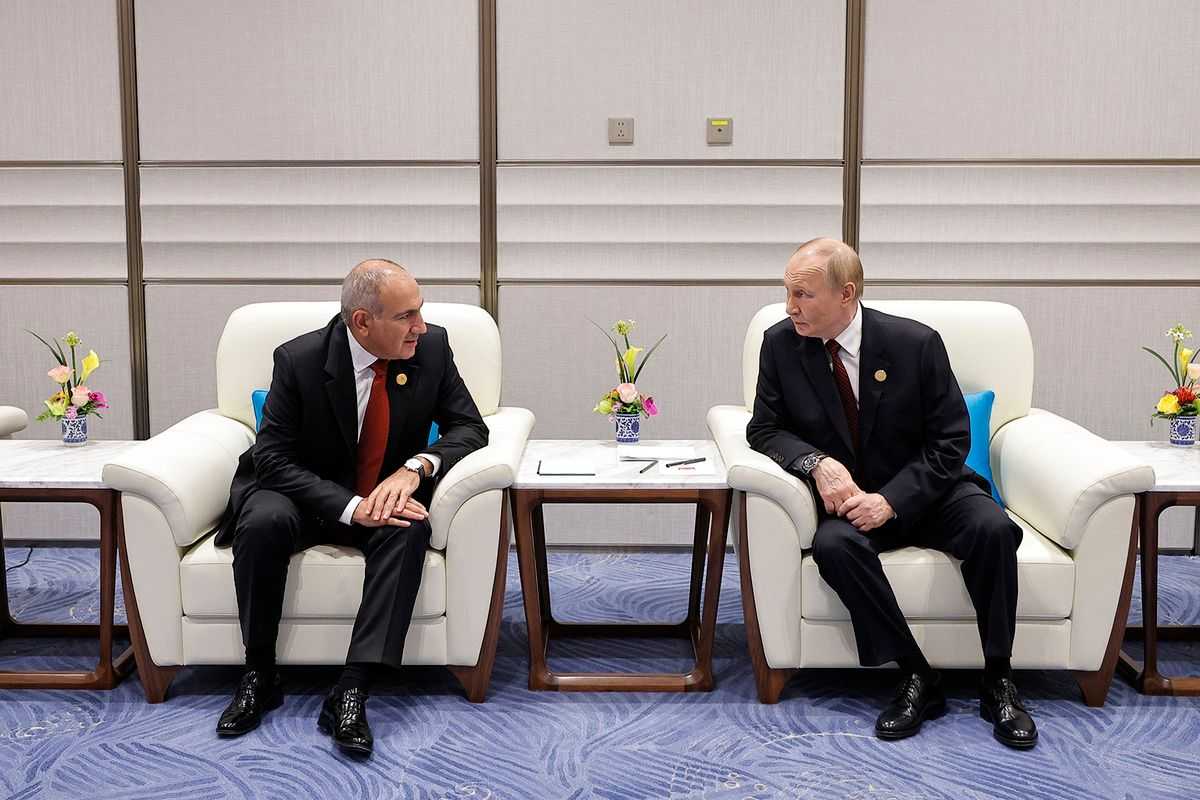
As the war in Ukraine captures the world’s attention, tensions have spiked yet again in Nagorno-Karabakh, with some local residents fearing that an attack by Azerbaijan is imminent.
Over the past week, both Armenia and Azerbaijan have accused each other of violating the ceasefire between the two countries, though few of these violations could be independently confirmed.
Some of the violence that could be confirmed included the shelling of Armenian-inhabited villages in Nagorno-Karabakh — which lead to one civilian being wounded, as well as an exchange of fire on the border between Armenia and Nakhchivan in which one Armenian soldier was killed.
A video from Armenia’s 5TV appears to show Azerbaijan shelling the Armenian-inhabited village of Khramort (Pirlar) in Nagorno-Karabakh. OC Media was not able to independently verify the footage. pic.twitter.com/iQISzzHqxX
— OC Media (@OCMediaorg) March 10, 2022
The Nagorno-Karabakh Human Rights Defender has also reported about an Azerbaijani military build up on the line of contact, while unverified videos allegedly showing a large scale movement of military vehicles were disseminated through social networks.
High ranking officials in the Nagorno-Karabakh capital of Stepanakert (Khankandi) were quick to deny the allegations, stating that claims of a military build-up by Azerbaijani forces ‘do not correspond to reality’.
In several Armenian-inhabited villages near the line of contact, the Azerbaijani military has been recorded apparently broadcasting threats and calling on the Armenian population to evacuate.
Additionally, damage to a gas pipeline in territory under the control of the Azerbaijani military has left much of Nagorno-Karabakh, including Stepanakert without heating for over a week in sub-zero temperatures. The cause of the damage has not been identified, though some officials in Nagorno-Karabakh have speculated that it may have been caused by purposeful Azerbaijani sabotage.
The Azerbaijani military has thus far refused Armenian repair crews access to the damaged section of the pipeline.
[Read more: Nagorno-Karabakh left in the cold]
One of the chief fears among Armenians is that with Russia militarily tied up with its invasion of Ukraine, Azerbaijan will use the situation to seize territory in Nagorno-Karabakh by force and expel the local Armenian population.
‘Azerbaijan is trying to take advantage of the chaotic developments of the last two weeks for achieving tactical gains on the ground’, wrote political analyst Tigran Grigoryan. ‘They are part of the Aliyev regime’s comprehensive and long-term policy of ethnic expulsion in Nagorno-Karabakh.’
On Friday evening, the official Facebook page of Nagorno-Karabakh Parliament was hacked, urging the residents of the city of Askeran to leave the town within the next several days.

Yerevan, Baku, and a peace plan
Officials in Yerevan have remained relatively muted on the growing tensions. Armenian Prime Minister Nikol Pashinyan stated only that ‘there are problems’ and that ‘steps’ should be taken to resolve them.
Armenia’s new president, Vahagn Khachaturyan, stated that Azerbaijan’s ‘actions’ should not distract Armenia from ‘establishing peace’ in the region.
There have also been calls for military actions among some members of the Azerbaijani opposition. Fuad Gahramanli, the former leader of the opposition All-Azerbaijan Popular Front Party called on Azerbaijani authorities to make use of a ‘historic opportunity’ and ‘liberate Khankandi’.
On March 12, the Azerbaijani Foreign Ministry had sent a five-point proposal to Armenia to establish a definitive peace agreement between the countries.
The Azerbaijani proposal calls for ‘sovereignty, territorial integrity, mutual recognition of international borders’; the cessation of ‘territorial claims’ against each other; an end to threats ‘to each other’s security in international relations’; the demarcation of borders and establishment of diplomatic relations; and the opening of lines of transport and communications.
The document remains silent on the specific question of the status of Nagorno-Karabakh.
In a March 14 statement, Armenia’s Ministry of Foreign Affairs stated it had sent a response to Azerbaijan and applied to the OSCE Minsk group for mediation, to agree upon a peace agreement that is in line with the ‘UN Charter, the International Covenant on Civil and Political Rights, and the Helsinki Final Act’.
Anar Mammadli, a human rights activist and head of the Center for Election Monitoring and Democracy Studies, an independent democracy watchdog in Azerbaijan, criticised the limited nature of the proposal.
‘The Azerbaijani side should prepare a wide and comprehensive roadmap on peacekeeping and present it to the public’, he wrote on Facebook, adding that such an agreement should include detailed ‘conditions of peace’ the investigation of war crimes, demining, the ‘study and protection of historical-cultural monuments’, and the guarantee of ‘the safety of Karabakh Armenians’.
For ease of reading, we choose not to use qualifiers such as ‘de facto’, ‘unrecognised’, or ‘partially recognised’ when discussing institutions or political positions within Abkhazia, Nagorno-Karabakh, and South Ossetia. This does not imply a position on their status.








